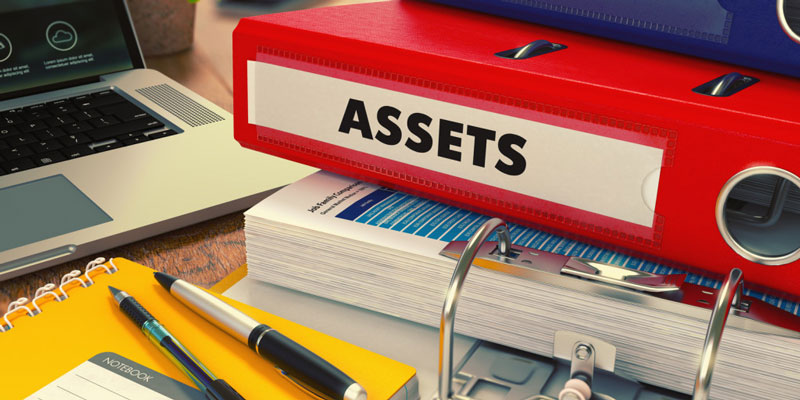Beneath the Radar: Discovering Hidden Frauds in Your Portfolio
Oct 07, 2024 By Vicky Louisa
In the world of investments, vigilance is crucial to safeguard your portfolio from hidden frauds that often fly beneath the radar. Financial scams continue to evolve with sophistication, masking themselves with legitimate facades and making it increasingly challenging to detect deceitful schemes. Investors may fall prey to cunning fraudsters who hide in shadows, ready to exploit any lapse in scrutiny. From Ponzi schemes to insider trading, these frauds present significant risks that can undermine your financial security and confidence in the market. Identifying and addressing these threats requires a keen eye, comprehensive knowledge, and proactive strategies to protect your assets. This guide elucidates common fraud tactics used against unsuspecting investors and provides insights into recognizing red flags, ultimately empowering you to fortify your portfolio against such covert threats.
Understanding Investment Fraud:
Investment fraud involves deception by individuals or companies to access investors' funds, often leading to significant financial harm. These scams manifest in various forms, such as Ponzi schemes, where returns are paid to earlier investors using the capital of newer investors, creating an unsustainable cycle.
Another common tactic is the pump-and-dump scheme, which involves inflating the price of a stock through false or misleading statements, only to sell off shares once the price is artificially high, leaving other investors with losses. Additionally, fraudulent investment products may be marketed with promises of high returns and low risks, enticing unsuspecting investors.
While some tactics are blatant, such as the aggressive marketing of too-good-to-be-true opportunities, others are more sophisticated, often eluding even the most cautious investors. Scammers may use complex financial jargon, fake credentials, or even create elaborate websites to lend credibility to their schemes. The consequences of such frauds can range from minor disruptions to catastrophic financial losses, affecting not only individual investors but also destabilizing markets.
Early recognition and response are crucial to minimizing risks. Investors should conduct thorough research, verify credentials, and remain skeptical of high-return promises. Regulators and financial institutions also play a vital role in educating the public and implementing measures to detect and prevent fraudulent activities.
Common Types of Investment Fraud:
To effectively identify fraud, it's essential to understand its potential forms. Here are some of the most prevalent types investors might encounter:
- Pyramid Schemes: Similar to Ponzi schemes, pyramid schemes depend on recruitment rather than legitimate investment returns. Investors must recruit more participants to earn returns, leading to eventual collapse when recruitment can no longer sustain the model.
- Unregistered Securities: Investment opportunities not properly registered with regulatory authorities are a significant red flag. These offerings often lack transparency, making it challenging to verify the investment's legitimacy.
- Affinity Fraud: This scheme targets specific groups, such as religious communities, cultural groups, or social circles. Fraudsters leverage shared identities or affiliations to gain trust and exploit investors. Affinity fraud is especially dangerous as it preys on established trust networks.
- Offshore Scams: Offshore investment schemes often promise high returns while operating in jurisdictions with lax regulatory oversight. These scams can be difficult to trace and are prone to fraudulent activities.
Red Flags to Watch For:

Detecting fraud in your portfolio requires vigilance. While some scams are well-concealed, there are often warning signs that can alert investors to potential fraud:
- Unrealistic Returns: If an investment promises consistently high returns with minimal risk, consider it a major red flag. Genuine investments fluctuate with market conditions, and no investment is entirely risk-free.
- Lack of Transparency: If the investment details, such as financial statements or business models, are unclear or difficult to access, be cautious. Transparency is crucial for trust, and any effort to obscure important information should raise suspicion.
- Pressure to Act Quickly: Fraudsters often use high-pressure tactics to push investors into making rash decisions without proper due diligence. This urgency can prevent investors from conducting thorough research before committing funds.
- Unregistered Investments: Ensure that the investment products you consider are registered with the appropriate regulatory bodies. Unregistered securities lack oversight, increasing their susceptibility to fraud.
- Complicated Fee Structures: Hidden fees, complex commission arrangements, and opaque terms signal potential fraud. These features can obscure the true value of an investment and may conceal dishonest practices.
How to Protect Your Portfolio?
Preventing fraud requires a blend of research, skepticism, and proactive action. Here's how you can safeguard your portfolio:
1. Conduct Thorough Due Diligence
Before investing, thoroughly research the company, its leadership, and its business model. Request and review financial statements, study the industry, and verify registration with the relevant regulatory bodies.
2. Consult a Financial Advisor
A trusted, qualified financial advisor can provide an additional layer of scrutiny. Financial professionals can help you navigate complex investments, assess risks, and verify the legitimacy of opportunities.
3. Verify Registration
Confirm that the investment product and the individuals offering it are registered with financial regulatory authorities, such as the U.S. Securities and Exchange Commission (SEC) or the Financial Industry Regulatory Authority (FINRA). Registration provides a basic level of regulatory assurance.
4. Monitor Your Portfolio Regularly
Avoid a set it and forget it approach to your investments. Regularly reviewing your portfolio for irregularities or unexpected changes can help identify issues before they escalate.
5. Use Fraud Detection Tools
Many financial institutions and investment platforms offer fraud detection tools that alert investors to suspicious activity. Utilizing these tools can provide an additional layer of protection for your portfolio.
6. Diversify Your Investments
Avoid concentrating your investments in one area. Diversification not only mitigates market risk but also reduces the potential impact of a single fraudulent investment on your entire portfolio.
7. Report Suspicious Activity
If you suspect fraud, report it to the appropriate authorities immediately. Organizations like the SEC and FINRA offer resources for investigating and addressing investment fraud.
Recovering from Fraud:

If your portfolio has unfortunately fallen victim to fraud, swift action is crucial to minimize losses. Here's how you can respond:
- Contact Authorities: Report the fraud to financial regulatory bodies like the SEC or your local consumer protection agency. They may initiate investigations and pursue legal action against the fraudsters.
- Seek Legal Counsel: Engage a lawyer specializing in financial fraud to help navigate the complex recovery process. Legal experts can provide guidance on filing claims or participating in class-action lawsuits.
- Notify Your Financial Institution: If the fraud occurred through your financial service provider, inform them immediately. They may have protocols to freeze accounts, retrieve lost funds, or investigate suspicious activities.
- Learn from the Experience: Although recovering from the emotional and financial impact of investment fraud can be challenging, use the experience as an opportunity to learn. Implement more robust safeguards, adopt meticulous research practices, and stay informed about new fraud strategies.
Conclusion:
While investment fraud can often go unnoticed, staying informed and vigilant is key to protecting your portfolio from deceitful schemes. Such schemes can range from Ponzi schemes to insider trading and often involve misleading information designed to manipulate investors' decisions. By identifying fraud indicators, such as promises of high returns with little risk or pressure to invest quickly, and performing thorough due diligence, including verifying the legitimacy of investment firms and reviewing financial statements, you can substantially lower your risk. Consistently monitoring your investments allows you to spot warning signs early, such as unexpected fluctuations or delays in payments.
On this page
Understanding Investment Fraud: Common Types of Investment Fraud: Red Flags to Watch For: How to Protect Your Portfolio? 1. Conduct Thorough Due Diligence 2. Consult a Financial Advisor 3. Verify Registration 4. Monitor Your Portfolio Regularly 5. Use Fraud Detection Tools 6. Diversify Your Investments 7. Report Suspicious Activity Recovering from Fraud: Conclusion:
Supervision of Community Cryptocurrency

Deciphering Insurance Underwriters: Unveiling Their Roles and Responsibilities

Different features of Total Assets (ROTA)

Factors To Consider Before Applying For A Mortgage

Understanding Statutory Reserves: A Comprehensive Guide

Building Trust: Elevating the Lending Process for Commercial Clients

Is There Any Relation Between The Consumption Growth and Inflation?

What You Need To Know About Recertifying For Income-Based Repayment

Unveiling the Strengths of North American Annuity: A Comprehensive Review

Which Global Stock Indexes Should You Know?

How Significantly Do Student Loans Impact Credit Scores?
